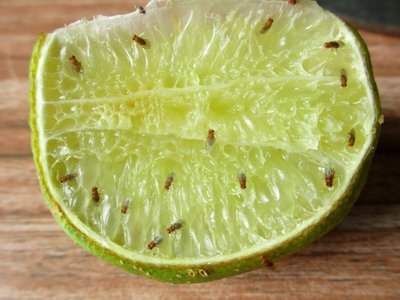Rotate Your Crops
One of the things to keep in mind when sketching out ideas for the upcoming season's vegetable garden is where in your plot the crops you grew last year were cultivated. Why does this matter?
Why Rotate?
Some pests and diseases can carry over in the soil; switching the spots where particular crops are grown can help foil their attacks. For example, all members of the cabbage family are susceptible to many of the same fungal diseases. The spores that spread these diseases can survive in the soil, often for several years. So making sure to plant your broccoli, cabbage, kale and other cole crops in a new spot for three years reduces the likelihood that your plants will become infected. The spores that cause the fungal disease early blight on tomatoes can survive in the soil for at least a year. Setting out tomatoes in a new location will help you grow a healthier crop.
Different plants take different amounts of nutrients from the soil. Leafy greens like spinach need lots of nitrogen, while legumes like peas and beans actually add nitrogen. Members of the squash clan, including cucumbers, melons and pumpkins, have a higher phosphorus requirement than tomatoes, eggplants and peppers.
Rotating crops can also help to keep soil in good tilth. If shallow-rooted crops like cabbage are followed by deeper rooted crops like tomatoes, soil compaction can be lessened. The repeated hilling of the soil needed for corn and potatoes helps to reduce the number of annual weeds in that section of the garden.
So try to put your veggies in a new spot within the garden in the coming year. It may not be possible to have an "ideal" rotation plan in a small backyard garden -- just do the best you can. If you can only site your tomatoes in a new location for two years rather than three, that's better than setting them in the same spot year after year.
It's All in the Family
So how do you put together a rotation plan? The first step is to group the plants you plan to grow into families with similar pest problems. Here are some common family relations to help you plan your moves.
Carrot family: carrots, celery, chervil, cilantro, dill, fennel, parsley, parsnip
Goosefoot family: beets, chard, spinach
Gourd family: cucumbers, melons, squash, pumpkins
Grass family: corn
Mint family: basil, mint
Mustard family: broccoli, Brussels sprouts, cabbage, cauliflower, collards, kale, kohlrabi, radishes, rutabagas, turnips
Onion family: garlic, leek, onion, shallot
Nightshade family: eggplant, peppers, potatoes, tomatoes
Pea family: beans, pea
Sunflower family: artichoke, cardoon, chicory, endive, lettuce
Then try to come up with a plan that will move these groups through the garden according to their nutrient demands. One plan might be to start with nitrogen-fixing legumes like peas and beans in one bed to build up the soil. Follow them the next year with leafy greens and cole crops to take advantage of the increased nitrogen in the soil. Next plant fruiting crops like the squash and tomato family members that will thrive with a little less nitrogen. The fourth season, finish up with root crops and onion family members with their relatively low fertility needs. Then it's back again to peas and beans.
So get out the graph paper and have some fun sketching out possible plans now. Then, when spring finally comes, you'll be ready to move your best plan from paper to garden plot.
Read more from The National Gardening Association.








